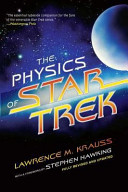1420 megahertz
In the Next Generation episode “Galaxy's Child,” the Enterprise stumbles upon an alien life-form that lives in empty space, feeding on energy. Particularly tasty is radiation with a very specific frequency 1420 million cycles per second, having a wavelength of 21 cm.
In the spirit of Pythagoras, if there were a Music of the Spheres, surely this would be its opening tone. Fourteen hundred and twenty megahertz is the natural frequency of precession of the spin of an electron as it encircles the atomic nucleus of hydrogen, the dominant material in the universe. It is, by a factor of at least 1000, the most prominent radio frequency in the galaxy. Moreover, it falls precisely in the window of frequencies that, like visible light, can be transmitted and received through an atmosphere capable of supporting organic life. And there is very little background noise at this frequency. Radioastronomers have used this frequency to map out the location of hydrogen in the galaxywhich is, of course, synonymous with the location of matterand have thus determined the galactic shape. Any species intelligent enough to know about radio waves and about the universe will know about this frequency. It is the universal homing beacon. Thirty-six years ago, the astrophysicists Giuseppe Cocconi and Philip Morrison proposed that this is the natural frequency to transmit at or listen to, and no one has argued with this conclusion since.
Notes:
The natural frequency of precession of the spin of an electron as it encircles the atomic nucleus of hydrogen, it is the tone of the universe.
Folksonomies: physics alien life seti frequency
Taxonomies:
/art and entertainment/radio (0.560924)
/technology and computing/consumer electronics/audio equipment/headphones (0.500376)
/art and entertainment/music (0.451458)
Keywords:
natural frequency (0.982385 (positive:0.313913)), prominent radio frequency (0.814761 (negative:-0.338811)), atomic nucleus (0.775199 (neutral:0.000000)), astrophysicists Giuseppe Cocconi (0.724581 (positive:0.313913)), specific frequency (0.702289 (neutral:0.000000)), universal homing beacon (0.697525 (positive:0.525808)), little background noise (0.679418 (negative:-0.754055)), alien life-form (0.608682 (negative:-0.529081)), opening tone (0.582088 (neutral:0.000000)), Generation episode (0.580098 (neutral:0.000000)), dominant material (0.570244 (negative:-0.324858)), visible light (0.560242 (neutral:0.000000)), galactic shape (0.557753 (positive:0.452895)), organic life (0.554788 (positive:0.476092)), Philip Morrison (0.553817 (positive:0.313913)), radio waves (0.545150 (positive:0.743745)), megahertz (0.526182 (neutral:0.000000)), hydrogen (0.523915 (neutral:0.000000)), precession (0.512989 (neutral:0.000000)), universe (0.487176 (positive:0.418888)), spin (0.481890 (neutral:0.000000)), electron (0.477995 (neutral:0.000000)), galaxy (0.473544 (negative:-0.304232)), location (0.445576 (positive:0.452895)), wavelength (0.440619 (neutral:0.000000)), Pythagoras (0.439572 (neutral:0.000000)), Spheres (0.436664 (neutral:0.000000)), conclusion (0.435628 (neutral:0.000000)), cm (0.433735 (neutral:0.000000)), Child (0.430986 (negative:-0.269652))
Entities:
Giuseppe Cocconi:Person (0.916558 (positive:0.313913)), Next Generation:PrintMedia (0.881532 (neutral:0.000000)), Philip Morrison:Person (0.753771 (positive:0.313913)), matterand:City (0.670418 (positive:0.452895)), Thirty-six years:Quantity (0.670418 (neutral:0.000000)), twenty megahertz:Quantity (0.670418 (neutral:0.000000)), 1420 megahertz:Quantity (0.670418 (neutral:0.000000)), 21 cm:Quantity (0.670418 (neutral:0.000000))
Concepts:
Electromagnetic radiation (0.964918): dbpedia | freebase | opencyc
Universe (0.835969): dbpedia | freebase
Frequency (0.768715): dbpedia | freebase | opencyc
Neutron (0.754346): dbpedia | freebase | opencyc
Proton (0.743560): dbpedia | freebase | opencyc
Quark (0.695848): dbpedia | freebase
Hertz (0.668933): dbpedia | freebase
Electromagnetic spectrum (0.643586): dbpedia | freebase





